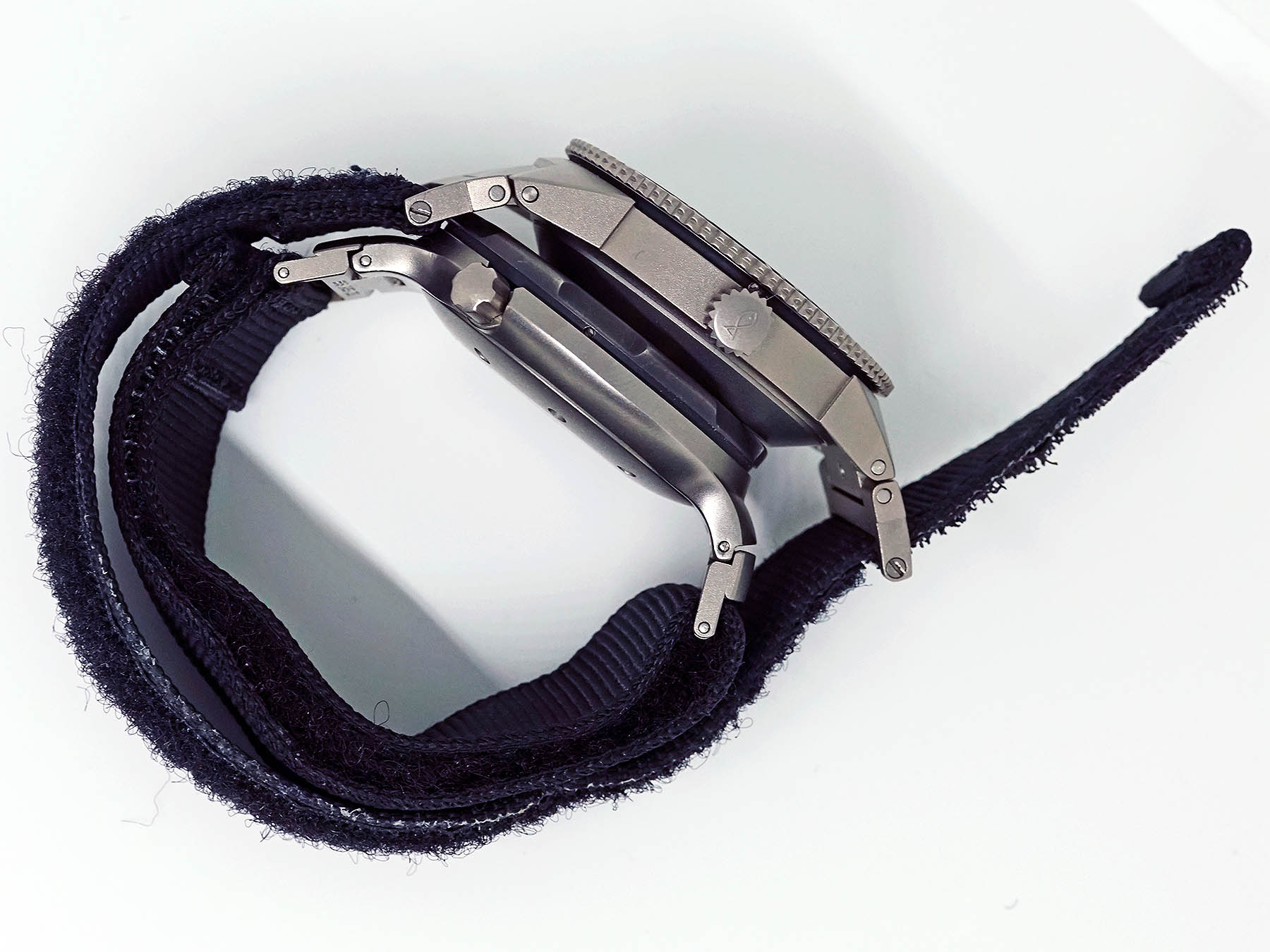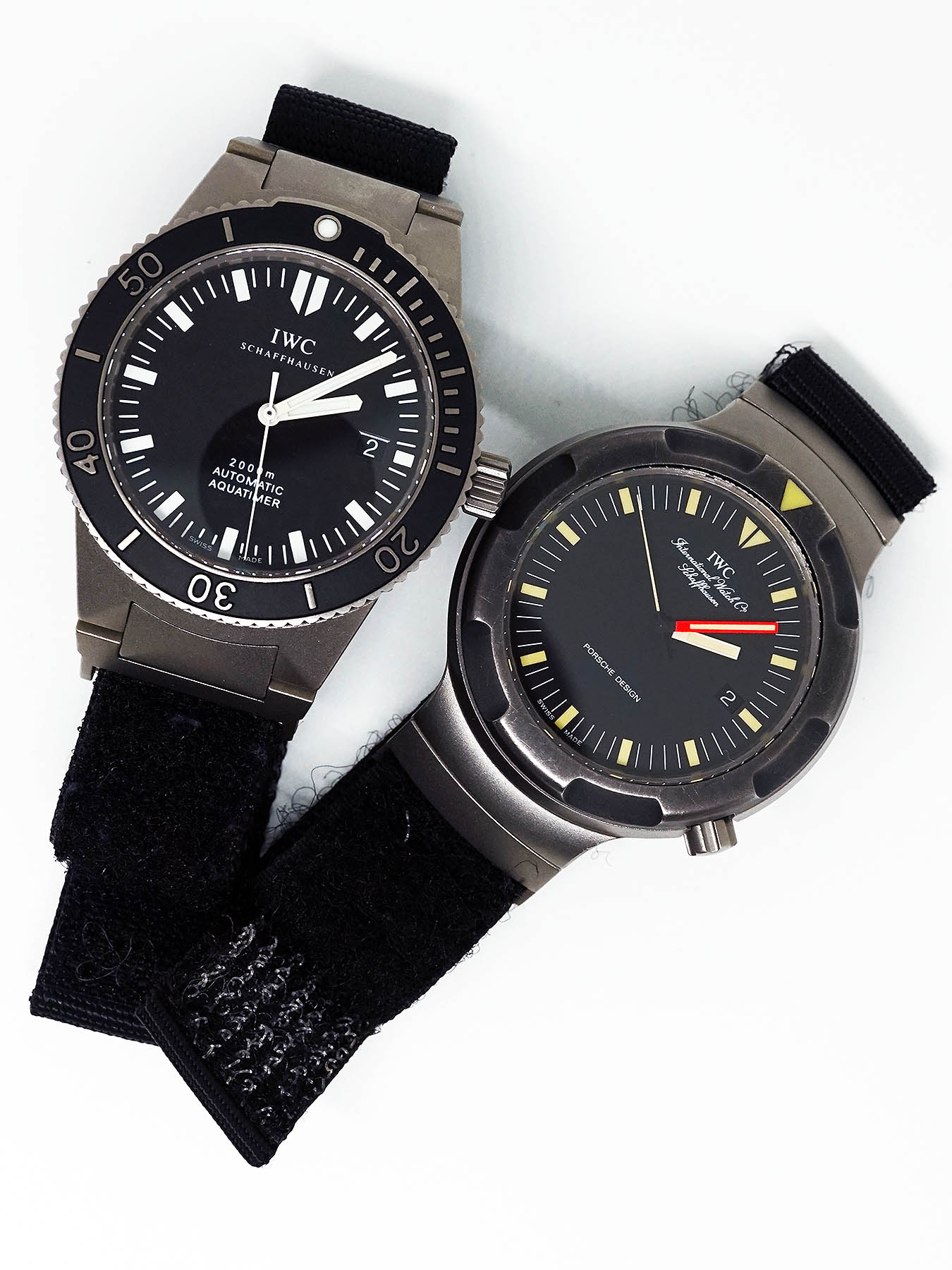A comparison of these two watches has been planned for many years. First I had
no AT Ref. 3536, the direct successor of the OCEAN 2000, then always one of
these two watches was into the banksafe ?!
Now, by chance, both watches are available and I can compare some - for me
interesting - detail.
The used OCEAN is an OCEAN BUND, which has a flat glass and is therefore
specified to a depth of 300 meters. The civilian variant OCEAN 2000 has a
thicker one-sided curved glass and is therefore specified to 2000 meters
diving depth.
Why does the BUND have a flat glass?
Sure not only to save a few grams of weight.
But likely to reduce glass reflections that more likely occur with domed
glasses.
A practical experiment has confirmed that, as expected.

I was surprised by the low weight of the OCEAN, only 66 grams, only 11 mm
high.
The AT brings 83 grams on the scales and is whopping 15 mm high.


Probably PORSCHE DESIGN still has the rights to the OCEAN design, so IWC was
forced to create its own design after the cooperation with PORSCHE DESIGN.
Many parts of the OCEAN were used for the AT as well: identical movement, the
glued glass with identical size and the mechanism for locking the bezel.
The bracelet of the AT with the pushers for the links are no longer available
for current AT models, because these pushers react very critically to dirt and
particles. These pushers clamp very frequently and are no longer solvable.
In order to keep the AT bands functioning when used, an intensive cleaning of
the bracelet is required after about three months. After cleaning, each pin
should be pressed several times - and the pins should be loosened and cleaned.
A procedure that is not required with the sleeve / pin titanium tapes of the
OCEAN, because the pins are easy to remove.
The OCEAN is the technically much more interesting option because it is
optimized minimizing edges, weight and height.
Only the actual required amount of material is used.
If you prefer design, you'll probably prefer the edgy AT, because the rounded
and flat design of the OCEAN is not getting used to the expectation of a
diver's watch.
The Lunette of the AT also fits unrestricted on an OCEAN and vice versa. Then
the current specifications for diving watches also by the OCEAN are respected.
Regards

